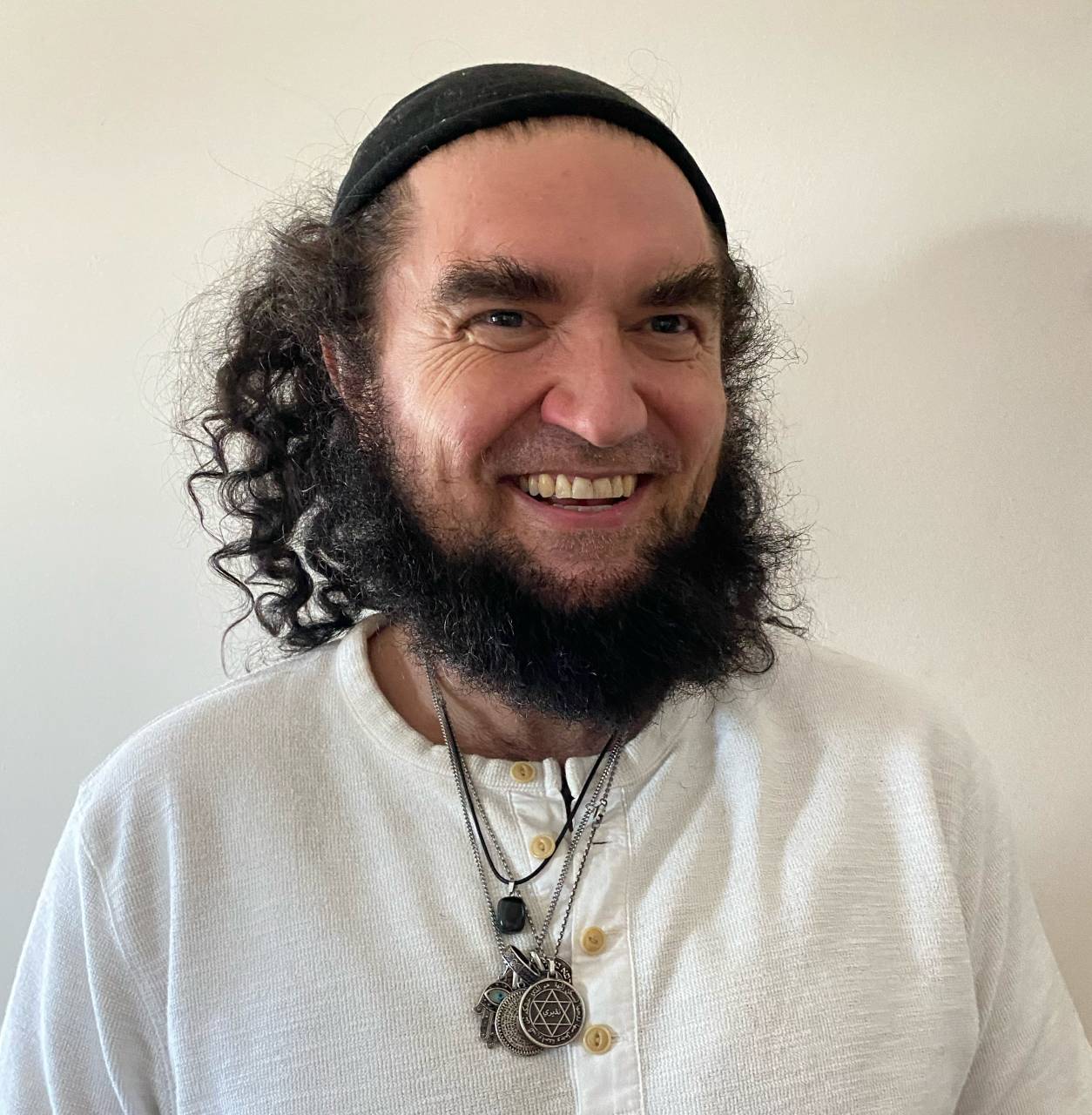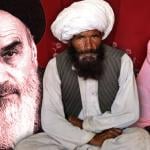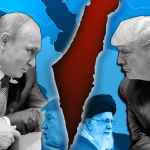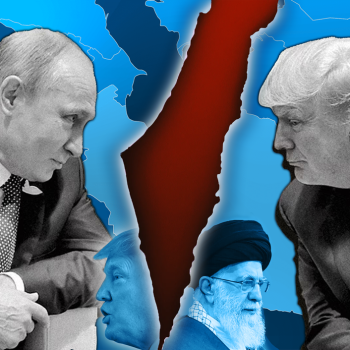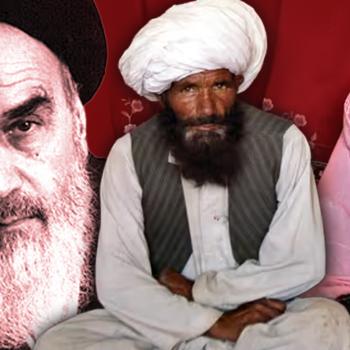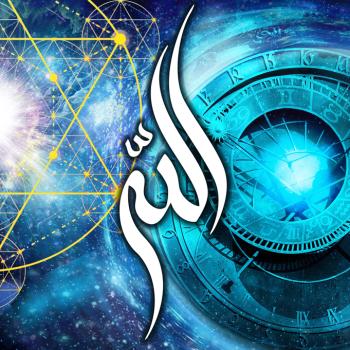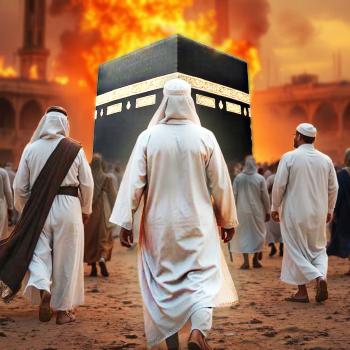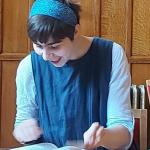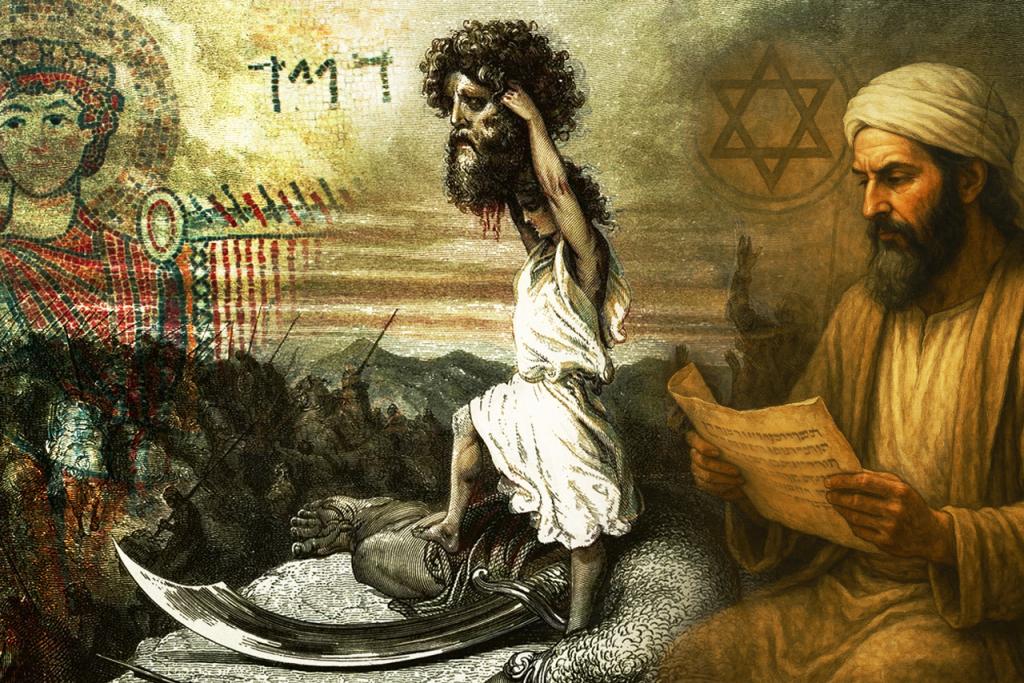
When most hear the term “Essene,” they think of the Dead Sea Scrolls, the Qumran Community Yachad, and the various Hellenists writing in Greek on the Jewish Second Temple Era sect. Catching the reader up on the post-Second Temple Era Diaspora forms of Essenic Judaism is far beyond the limited scope of the work at hand. For those sincerely interested, however, I know of no extant source which better documents even a limited amount of this history than my first master’s thesis: .
This, of course, is not the narrowed focus of that text. There are several intended future works-in-progress which will more robustly document the subject of the Essene Yachad, as it both integrated in some cases with the emerging Rabbanites, and in other cases become something of a revolutionary, Anti-Caliphatist secret martial society.
Fast forwarding ahead, the task which I have been charged with by my beloved brother, Rabbi `Oseh of Gaza, is composing the largely oral traditions of the Tariqat `Isawiyah today, into written form. Naturally, as a scholar of Near Eastern Religions, Linguistics and History, and as a somewhat prolific writer, he found me the natural choice for this task.
The work at hand is but one of the midrashim orated to me by my brother Rabbi `Oseh on King David. It is presented as “An Essene Midrash on the Wisdom and Compassion of King David… and How It Wasn’t Enough.”
We are told that the purpose of teaching in Talmud is to learn from students and thus one must teach for free for this reason and also so that the teacher might be hard on the student when necessary and not cater to them as a customer (Tosafot Yom Tov on Mishnah Avot 1:6:1; Taanit 7; Makkot 10).
King David thus says in Tehillim “from all my teachers have I learned mastery” (Psalm 119:99).
This indicates not only that he learned from teachers of an array of perspectives and teachings, but also that he took on students in secret who otherwise would have been taught by no Jew.
In fact his compassion and empathy was so unusual that even acknowledging the Mitzvah that one must kill `Amaleq in every generation, he encountered Amaleqites who wished to leave behind their vampiric cannibal culture of murder and terror, and make teshuvah.
Thus, just as Shlomo Ha’Melekh was said to have controlled and commanded beings of a paranormal nature, we see a similar class of being described in these tales of the Amaleqim.
Thus, in Shmuel Alef 15, we read that supposedly all of the Amaleqim besides King Agag had been killed by Shaul… and yet, it is not long before there are more Amaleqim to be fought – even one who claims to have killed Shaul himself (who David subsequently has executed).
Indeed, the Amaleqites were not normal humans in the Biblical account, but instead sorcerers akin to what is today called “Skinwalkers” amongst the Dine people. That is, it was said that they could transform or make themselves appear to transform into animals or even little children. Their own path of sorcery required them to sacrifice any and all children to the sheddim who they fed the energy of suffering and blood to. While their feats of sorcery were considered unparalleled in the region, they were far from the only Canaanite groups who practiced child sacrifice and immolation – as confirmed by countless archeological finds.
Accordingly, because of the nature of the `Amaleqim as vampiric, child-killing, even shape-shifting sorcerers, the Torah commands that all `Amaleqites must be killed – even women, babies and animals. This is because any appearance in this way to the Children of Israel would merely have been of the appearance of such – and not actually children or non-human animals. Whether one today finds this story reasonable or not, this is the nature of tribal storytelling then as it is today amongst the Dine and other Indigenous peoples. Thus, the `Amaleqites, like the Refaim and Nefilim, are not described as regular human beings, but in fact supernatural or quasi-paranormal beings.
As for the name `Amaleq, there has never in history been a people known by this name. No historians nor archeologists have found any record of such a people, and yet modern day minds tell themselves (and any who will listen to them), that they know the truth behind this story, and how the Tanakh teaches “genocide” of the “`Amaleqites”. Little do they know – very little – that this term means `Am laq – or a blood “licking people”. That is, they are “the blood thirsty” or even as we might say in more modern lore: “vampires.”
Further Biblical confirmation that this was never an actual ethnicity, but a literal description of “blood-lickers”, is found in Sefer Berashit (Genesis 14:7). Therein, we read of the “field of the `Amaleqim.” But this was long before the Biblical `Amaleq was born. Thus, it is clear that this was never regarded as a name for a particular tribe, but instead a class of paranormal, vampiric and cannibalistic sorcerer in the Biblical accounts.
Imagine, then, self-deluded children today educated by their own conjecture and egos, speaking of the “genocide” against shape-shifting vampiric sorcerers – as passed down Biblically from tribal storytelling. Even worse still, some have been so foolish as to postulate that this “brazen act of genocide” invalidates the Indigenousness of the Children of Israel to the Land of Israel and Israelite ethnogenesis – the Land of Shem and `Eber before them. Again, they base this “invalidation” upon Bronze Age tribal stories told around the fire by elders of the community, about shapeshifting vampires… and these youths of today see themselves as wise in their own eyes. May Ha’Shem protect us from the beguiling of the Nefesh Ego, which is the chief of all idols.
In keeping with the Mitzvah, David instructed them that he could not teach them while they were Amaleqites, because he must first kill them.
Thus, it is written that one who emerges from the miqvah as a ger tzaddiq convert has been “born again” (Talmud Bavli, Yevamot 62a; 97a; Rambam Mishneh Torah, Issurei Biah 14:11).
As well, we are taught that if one takes a new name, then they can alter their very destiny.
As such, King David taught that they must die before death, and thus, through his compassion and teachings, he killed these last remaining Amaleqites – as the Tanakh teaches – “kol nefesh” – every Ego-Self.
When King Shaul made the marriage to his daughter Mikhal conditional upon David retrieving 100 P’lishtim foreskins, the obvious intent of Shaul was for this to be akin to a Native American “scalping” – proof that this number had been killed by his future son-in-law.
In fact, Shaul wished not merely for 100 more dead P’lishtim men, but to unleash darkness in David’s soul which had already overtaken his own. He wanted to bring out bloodthirstiness in David.
David, being far more clever than Shaul, thus set out into `Aza, where he encountered P’lishtim, and challenged them to a series of contests – beginning with martial skill, and advancing to games of reason and deduction. For each whom he challenged, he wagered that the victor would have the other immigrate to their tribe. For those who would immigrate to the tribes of Israel, this meant gerut, just as David’s own great-grandmother Ruth was a Moabitess, and even a descendant of incest between Lot and his daughters.
Thus, it is written that Ha’Shem “had three ‘finds’ – one of them was David, as it says (in Tehillim/Psalms 89:21), ‘I found David, my servant.’ (Berashit Rabbah 29:3). And “where did I find him?” The Midrash tells of Ha’Shem asking rhetorically, “in Sodom!” (Berashit Rabbah 50:10).
David knew that if the P’lishtim were challenged as a whole, they would act with treachery and would sabotage the contests or simply overwhelm him. As such, one by one he defeated the 100 P’lishtim and then converted them for gerut immigration to the Tribe of Yehudah. When he returned to Shaul, he did so with a literal bag of freshly cut, bloody P’lishti foreskins.
This sort of cleverness in contest showed that David mastered the Art of Fighting Without Fighting – Chokhmat l’hilacham bali l’hilacham (חכמת להילחם בלי להילחם) – as it is today said.
When Goliath challenged the Israelites, David thus accepted. But instead of taking up the bulky armor, which he knew would offer him no advantage, he chose instead to fight with the weapon of his intellect and reason.
Now as it was, Goliath’s P’lishti helmet covered only the front and top of his head. This was because the Greek P’lishtim invaders prided themselves on refusal to retreat – even in the most dire of circumstances. As such, the back of the helmet was merely strapped on to their heads – exposing the brainstem “kill-switch”, so to speak.
As the two faced off opposite each other, the first thing David did was cut and ran. Goliath instantly began to laugh – to cackle even!
“This boy must have had a change of heart!” He scoffed. The crowd of Greek P’lishtim Colonizers roared with mocking approval.
From rock and boulder to hillside, David ran from one position of cover to the next – each time waiting for Goliath to launch his next attack. As the giant’s projectiles landed, David ran for the next cover until finally, he had tricked the giant into believing he was trapped behind a rock – daring not to run again for cover.
In reality, however, at this point the Youth had snuck down the hillside and crawled on his belly like a serpent until he made his way behind Goliath.
Thus, it is that the gematria of Nachash, Serpent, and Mashiach, the Anointed King of the Jewish people, is the same: 358. In the case of one who would be king, they must be as wise as the Nachash, but as Tahor purified as Yonah – whether a dove, or the prophet – tried and tested – of this namesake. Indeed, in the tale of the Ninavite prophet, he was so called because of the purification he underwent. His proper name, given to him by his parents, is of no importance to the story – no more than that of “Abraham” or “Mosheh” Rabbeinu for that matter.
Having outsmarted the Philistine, the giant P’lishti Invader, David positioned himself and began slinging his shot. Though he had five smooth stones, he only required one. In this is the lesson that even with the utmost confidence and emunah, one should still provide ample backups as contingencies, in the event that the unforeseen causes the path to success to twist and turn and wind along longer than one had imagined. Thus, the Sages said that if you hear that Mashiach has come and you are busy planting a tree… finish planting it.
The Youth, David, launched the single stone with such force that when the helmet was eventually removed from the severed head of the giant, it became apparent that David had caved in Goliath’s skull from the brainstem all the way through the grey matter, into the inside of his very forehead – within the skull.
Thus, we see that though he was one of five remaining sons of Yishai, alive at the time prophet Sh’muel was called upon to select and anoint the successive king. It was only through David that a shoot would spring up from the root of Yishai. Accordingly, we see here the relationship between the words Ben, “son” and Aben, “stone.”
David’s intelligence and empathy did not end there, but also extended to his desire for Bat Sheva. It is typically assumed that David was overwhelmed by hunger for her flesh, but the midrash here is that he saw her washing herself on the roof after her husband Uriah had beaten her. She washed blood off of her face, and elsewhere.
Thus, when David saw that Uriah had been abusing her, and that she was washing from injuries and not from menstruation – as is often wrongly assumed in tradition – he summoned her and asked her what had happened. As is typical of abused women, she made up an excuse for her injuries, even blaming her own supposed clumsiness. Finally, he ordered her to be truthful with him right then or he would have her husband executed. But she did not budge, nor say a word in protest of this threat.
David replied to her silence, saying: “You don’t care if I execute your husband? Why is that?”
She answered, “he is my husband in contract only. He has refused to lay with me from day one. He has no desire for me whatsoever and has never consummated our marriage. When I asked him why he does not find me attractive, he aggressively took hold of me. Then, believing that he was going to lay with me, I reached to uncover him, only to find he still did not desire me.
At this, he began beating me and harming me with anything he could find. I do not care what you do to him. Indeed, if I could kill him and not suffer the consequences of prosecution for murder, then I would do so myself. For I do not see this qatal (קטל) as ratsach (רצח) murder, but as harag (הרג), justifiable homicide in self-defense.
When David heard this he was enraged at Uriah the Hittite, but his rage was cooled temporarily by his compassion for Bat Sheva, who he held to his chest. He said to her: “As he has refused to honor his end of the marital contract with you, know that your marriage was annulled and void from three months after he refused you. This I declare as the Anointed King Mashiach of the Children of Israel, and as a Nevi, a Prophet of Ha’Shem. As such, I marry you now – calling Heaven and Earth as my witnesses before Ha’Shem – that you are not to the Hittite, but I am to my beloved and my beloved is to me (Shir Ha’Shirim 6:3).
The two then retired to bed, and the King merely held Bat Sheva, not wanting to impose himself upon her physically after she had been beaten.
Nevertheless, this sensitivity stoked a fire within her and in the night she consummated her marriage with the King – of her own initiative and desire. David Ha’Melekh had only the desire to please her and glorify the Shekhinah of Ha’Shem through pleasing his newly-wedded wife.
By morning, the two knew that that even their having conversed about the matters of abuse – without third-party witnesses – would be a matter highly suspect. Still, David, like Shlomo after him, was known to judge without the need of proof, using only his faculties of reason and inspiration of the Ruach Ha’Qodesh to determine his ruling. As such, the had absolute authority to legally annul the marriage, but so that the justification and explanation for the annulment would not look as though it had been invented, David decided to allow the River of Destiny to guide them along the way.
After he rose for the day, David once again boiled with rage at Uriah the Hittite. Yet he knew that if he did not control that rage, and draw the energy out of it it and let it rest within his belly, any direct confrontation would look as though he and his new wife had been having an illicit affair, and that he murdered Uriah in a jealous fit of rage.
Thus, being clever as David was, he assigned Uriah the Hittite to the frontlines in battle. David called out to Ha’Shem and asked that the Divine Will be meted out upon him. If it was his fate, his mazel to live, then Uriah would indeed return home, as others on the frontlines had. If it was written for him to die for his own iniquities and cruelty, however, then that would be the day that he died.
Still, just because David followed the rules of halakhah, this does not mean his actions carried no consequence. For every action there is an equal and opposite reaction. And thus, as he caused the life of Uriah to be taken, so too was the fire of life within their child snuffed out at that time, within that body. This was, however, only for the Neshamah to return at a later time – as so often when there are miscarriages, stillborns, or premature births such as this, wherein the newborn fails to thrive or thereby contracts illness from which they cannot recover.
Indeed, it was Shlomo Ha’Melekh who was to be born, and had he come at that time, he would not have learned from the same father with the same experiences, wisdom and even sadness and detachment from the physical world, that he had when he returned in incarnation later – to the same parents. As well, had he been born at that time, there would have been speculation about the date of his conception and whisperings about impropriety. Even if he were to explain to the people the true, behind-the-scenes story then, his explanation would sound like little more than a fabricated excuse to the masses.
Similarly, though David was a righteous warrior, he still was an Ish Milchamah – a Man of War – and indulged in bloodshed. In those moments of battle, David delighted in killing. He told himself that this indulgence in violence was acceptable because these were evil men who he was cutting down. But because of this tarnishing of the mirror of his heart and the blunting of his empathy, he was deemed unfit to build the Temple, which his son Shlomo instead was charged with building on Mount Moriah.
In this is a message for those who reflect… David Ha’Melekh was as wise as the Nachash of Gan `Eden, and yet in many things he acted imperfectly – missing the mark. As such we have countless family tragedies. We have Abiyah contending for rule against Shlomo Ha’Melekh, we have pilegeshim betraying David with his son Avshalom, and indeed the latter’s schemings against his father. This fitnah was so great that it was carried on into subsequent gilgulim. If this is the case with a prophet and king, then how much more so does the general body of the B’nei Adam error?
The Rambam was approached by a man just before Yom Kippur. The man said, “Rabbi, this year I have not sinned whatsoever! I have neither wronged Ha’Shem, nor my fellow man, nor myself! What should I make teshuvah for? What should I repent for on Yom Kippur?”
The Rambam replied: “Repent for the fact that you believe you have nothing to repent for.”


